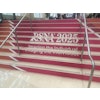CHICAGO – Although the exam takes about a hour, high-resolution selective 3-D MRA with a real-time navigator technique is a promising noninvasive method of evaluating coronary artery stenosis.
Japanese investigators from Kurashiki Central Hospital presented the results of their study at the RSNA on Monday. Presenter Dr. Yuji Watanabe praised 3-D magnetic resonance angiography for allowing radiologists to look at coronary arteries segment by segment. However, he cautioned that the technique required for this modality was “very demanding.”
Watanabe explained that one full exam has four parts to it: a scout scan; a 3-D TFE-EPI transaxial image of the entire heart; a three-point blood scan to determine the imaging plane; and finally, the high resolution selective 3-D MRA exam.
In this study, 3-D MRA was compared to conventional x-ray coronary angiography in a dozen patients with coronary artery stenoses. In order to image proximal and distal coronary arteries, a 3-D slab was oriented along the arteries and two double oblique imaging planes were used. Each group of right coronary arteries-left circumflex arteries and left main trunk-left anterior descending arteries were covered.
MRA exams were done six hours after conventional angiography and the results were compared by three radiologists and three cardiologists. Out of 12 patients, 15 coronary angiograms including a total of 51 coronary artery segments were obtained with diagnostic quality. For stenosis of 50% or greater, the 3-D MRA exams had a sensitivity of 80% and an 86% specificity. For stenosis of 75% and higher, 3-D MRA had a sensitivity of 63% and a specificity of 93%.
Angiography demonstrated the following: 23 stenotic segments, eight segments of mild stenoses, seven segments of moderate stenoses, six segments of severe stenoses, and two occluded segments.
While Watanabe said he and his co-authors were pleased with the results, he acknowledged that the technique does have some limitations. In addition to requiring patient cooperation (depending on the heart rate, the scan time for a single image ranged from 10 to 26 minutes), image degradation can be a problem when arrhythmia is present. Also, the technique was not attempted on patients with metallic arterial stents, he said.
By Shalmali PalAuntMinnie.com staff writer
November 27, 2000
Copyright © 2000 AuntMinnie.com
Click here to view the rest of AuntMinnie’s coverage of the 2000 RSNA conference.
Click here to post your comments about this story.



















